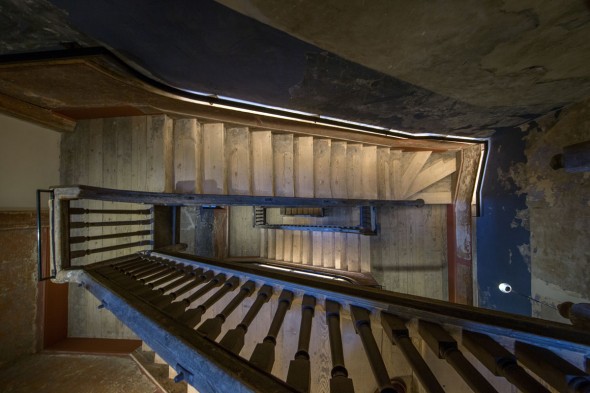The other day I posted a photo of Dublin's Hungry Tree. It grows in the park of the King's Inns, a legal institution founded in 1541. (The present building dates from 1800.)
Here's a longer view of Henrietta street.
But being the 18th century, no house had running water, and everyone pooped in a pot.
The Act of Union was an economic disaster for Dublin, and the absence of leadership lead to human disaster when the potato crop failed in the late 1840s. Millions of people who had lost everything moved to Dublin where they could find work and food. And they needed housing.
Beginning in the 1850s, property developers bought dilapidated Georgian houses and converted them to apartment houses, one apartment per room. They installed modern sanitary facilities: A common tap in the yard, outdoor toilets, and a single toilet per building.
The conversion of Dublin's Georgian houses to tenement apartments provided housing to Dublin's hard-working poor, though the toilets were fearsome and plumbing non-existent. Large families lived in crowded apartments with little heat and no privacy. And yet those conditions were far better than what millions of families have tonight, living in a car or a tent under a freeway.
Beginning in the 1930s the new Irish government began building new apartment buildings for the people who lived in the tenements. Here's an example of a mid-century apartments just a few blocks away from Henrietta street.

Today, some of these houses
Some are empty, some are offices. 14 Henrietta street is a museum.
The Irish government of the 1950s and 60s began building public housing in the suburbs and the tenements emptied. Some people chose to remain
A video of people remembering the wonderful food their mothers and grandmothers made for them in their apartments in Henrietta street.
This video explains how the museum could recreate a 1970s apartment in such detail.
Many women worked at home.
If you couldn't afford a blanket, you slept under your coat.
A nice kitchen, but no taps or sink.
There is an RTE documentary about Henrietta street and Dublin tenement living. This is the first episode of four. It's worth the time as a history of a city and its poorest residents. As they say: "relatable."
The documentary follows a family who lived at 7 Henrietta street. For the program, younger members of the family live in the house for a weekend and re-enact the life of their parents and grandparents.
A few days after visiting the museum, I read an article in New York Magazine, A $60 Billion Housing Grab By Wallstreet. Truly nothing changes. When the price of houses dropped in 2008, instead of the deflation of the bubble leading to greater affordability, the wealthy used their capital and access to taxpayer-backed loans to purchase hundreds of thousands of single-family homes and turn everyone into tenants. Forever.
We have sanitation laws now, but laws will change to serve the powerful. How much longer till they are renting us our pots?
















No comments:
Post a Comment